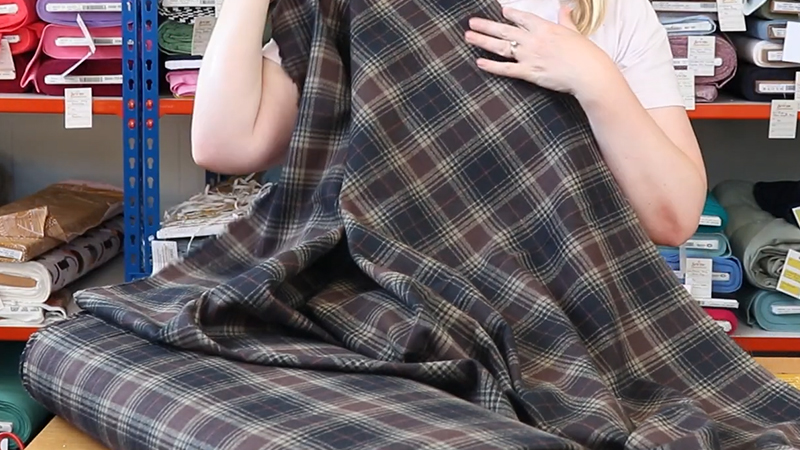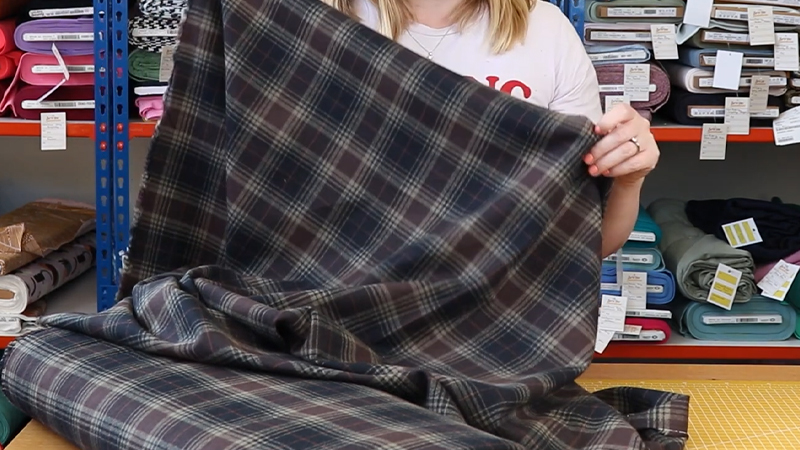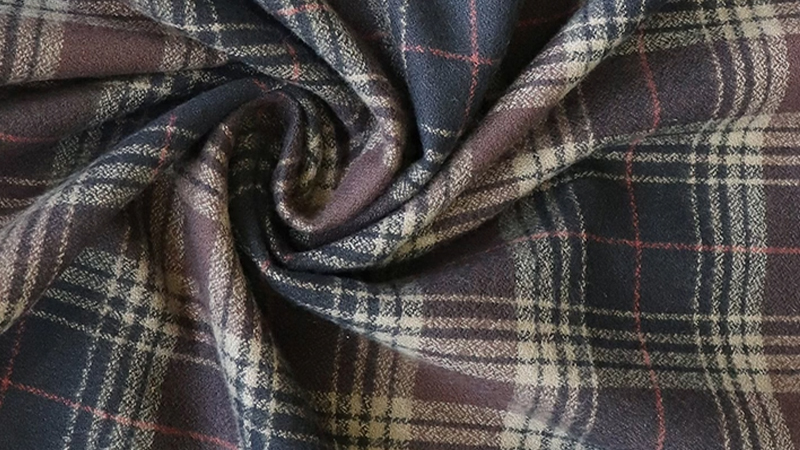
Flannel fabric is a textile synonymous with comfort, warmth, and durability. Loved worldwide, it combines practicality with a soft, cozy texture that makes it ideal for clothing, bedding, and accessories.
Originally crafted from wool in 17th-century Wales, flannel has evolved to include cotton and synthetic fibers, adapting to modern needs without losing its timeless appeal.
Known for its distinctive softness, excellent heat retention, and moisture-wicking abilities, flannel has remained relevant across centuries, serving as both a functional material and a fashion staple. This blog explores the history, types, properties, production, and uses of flannel fabric.
The Warm Embrace of Flannel
Flannel is more than a fabric; it is a sensory experience of softness and warmth. From comfortable shirts and pajamas to cozy blankets, flannel offers an unmatched blend of texture and utility.
Its enduring appeal lies in a trifecta of attributes: exceptional softness, superior warmth, and practical moisture-wicking properties.
Originally made from wool in Wales, flannel has expanded globally, encompassing cotton and synthetic blends. This versatility allows it to adapt to contemporary fashion, home textiles, and seasonal wear, while maintaining the nostalgic charm that has made it a household favorite for centuries.
What is Flannel Fabric?
Flannel fabric is a soft, woven fabric prized for comfort and versatility. Characterized by a slightly fuzzy texture, it is widely used in clothing, bedding, and other household textiles.
Flannel is available in brushed or unbrushed forms, but its defining qualities, softness, warmth, and breathability, remain constant.
Its loose weave contributes to its moisture-wicking capability, keeping the wearer dry and comfortable. Unlike many fabrics, flannel effectively balances heat retention and ventilation, making it suitable for varied climates and applications.
History of Flannel

Welsh Origins
Flannel originated in 17th-century Wales, where sheep farming was abundant. Early textile workers utilized leftover wool to create soft, warm, and moisture-resistant fabric.
This practical approach produced material ideal for protecting farmers and laborers from cold, wet conditions, laying the groundwork for flannel’s long-standing reputation as a utilitarian yet cozy fabric.
Global Spread
From Wales, flannel’s popularity spread throughout Europe. During the Industrial Revolution, flannel became common workwear in France and England due to its warmth and durability.
Later, the British Empire introduced it to colonies, including America. Notably, flannel undershirts and uniforms were used in the Civil War and World War I, proving its functionality in harsh conditions. Hamilton Carhartt’s flannel manufacturing company in 1889 further popularized it for durable workwear.
Cultural Significance
In the 1990s, flannel became a symbol of the grunge movement, especially in plaid patterns associated with bands like Nirvana and Pearl Jam.
This era cemented flannel as a cultural icon, blending its practical roots with fashion trends. Today, flannel continues to serve both aesthetic and functional purposes worldwide.
Properties of Flannel: Why It’s Loved
Flannel’s popularity stems from three core attributes: softness, warmth, and breathability.
Softness
Flannel’s softness comes from:
- Fiber Choice: Natural fibers like wool and cotton contribute inherent softness.
- Loose Weave: Allows fibers to move freely, enhancing texture.
- Napping Process: Brushing the fabric raises fiber ends, producing a plush, fuzzy surface.
Warmth
The weave traps air within fibers, creating insulation that retains body heat. This property makes flannel ideal for clothing and bedding in cooler climates.
Breathability and Moisture-Wicking
Despite its warmth, flannel remains breathable. Its loose weave allows airflow, while moisture is drawn away from the skin to the surface of the fabric, where it evaporates. This balance of insulation and ventilation enhances comfort in both clothing and bedding.
Types of Flannel
Flannel is versatile, available in several varieties based on fiber composition and finishing techniques.
Traditional Flannels
- Wool Flannel: The original type, ideal for suits, jackets, and coats. Renowned for durability and elegant drape. Australia is the leading producer of high-quality wool flannel.
- Cotton Flannel: Soft, lightweight, and breathable. Commonly used for pajamas, bedsheets, and casual shirts. India dominates cotton flannel production.
Specialized Flannels
- Flannelette: Affordable alternative to cotton flannel, often synthetic.
- Vegetable Flannel: Made from Scots pine fibers; hypoallergenic but less common.
- Ceylon Flannel: Cotton-wool blend with exceptional softness.
- Diaper Flannel: Heavily napped for absorbency; ideal for reusable baby diapers.
- Baby Flannel: Soft, napped on both sides for delicate skin applications.
Synthetic Flannels
Made from polyester or nylon, synthetic flannel is flame-resistant, wrinkle-free, and inexpensive. However, it lacks the softness and warmth of natural fiber flannels.
How Flannel is Made

The production process involves several stages:
Sourcing Fibers
- Wool: Shearing sheep
- Cotton: Harvesting cotton plants
- Synthetic: Manufacturing chemical fibers
Spinning Yarn
Fibers are twisted and stretched to create strong, consistent yarn. Wool is easier to spin, which contributed to flannel’s early development.
Weaving Fabric
- Twill Weave: Creates diagonal lines and high durability.
- Plain Weave: Alternating warp and weft threads, uniform appearance.
Napping and Finishing
Napping raises fibers to create softness and insulation. Final treatments may include dyeing, softening, pre-shrinking, or flame-retardant coatings, depending on fiber type.
Common Uses of Flannel
Clothing
- Workwear: Durable and warm shirts for laborers.
- Formal Wear: Wool flannel suits offer elegance and comfort.
- Pajamas and Loungewear: Ideal for nighttime comfort, moisture management, and warmth.
Home Textiles
- Sheets and Blankets: Provide cozy insulation with breathability.
- Curtains and Tablecloths: Soft drapability enhances aesthetics.
Accessories
- Hats, Bags, Scarves: Durable and insulating, perfect for cold weather.
Crafting
Flannel’s versatility makes it ideal for quilting, sewing, and DIY projects. Consider needle strength and pre-shrinkage to account for fabric thickness and potential shrinkage.
Advantages of Flannel
- Warmth: Excellent insulation for cold climates.
- Softness: Luxurious feel enhanced by napping.
- Breathability: Balanced air circulation prevents discomfort.
- Durability: Strong weave ensures longevity.
- Ease of Care: Machine washable, with mild detergent and low-heat drying.
- Affordability: Offers value compared to other premium fabrics.
Challenges and Solutions
Pilling
Occurs from fiber entanglement; prevent by:
- Choosing 100% cotton flannel
- Washing in warm water
- Air drying
- Using a fabric shaver
Color Bleeding
Prevent with a vinegar rinse, salt in the wash, or color catcher sheets.
Shrinkage
Use warm or cold water and low-heat drying; check care labels for pre-shrunk fabrics.
Excess Warmth
Flannel may be too insulating for those who run hot, particularly indoors or in mild climates.
Conclusion
From its humble origins in Wales to its global presence today, flannel fabric remains a timeless symbol of comfort, versatility, and durability.
Its soft texture, warmth, and moisture-wicking properties have ensured its continued relevance in clothing, home textiles, and fashion. Modern production spans wool, cotton, and synthetic variants, allowing flannel to meet diverse needs.
With proper care, attention to fiber type, and awareness of sustainability certifications, flannel continues to be an ideal choice for practical, stylish, and responsible living. Its enduring appeal ensures it will remain a cherished fabric for generations.





